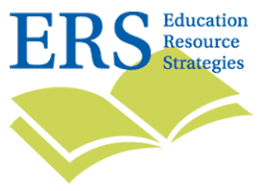In the rapidly evolving landscape of education, the need for effective educational resource strategies has never been more critical. Educators and institutions are continually seeking innovative ways to leverage resources to enhance teaching and learning experiences. This essay explores various strategies for maximizing the use of educational resources, focusing on both traditional and modern approaches. By understanding and implementing these strategies, educators can create more engaging, inclusive, and effective learning environments.
Maximizing Traditional Educational Resources
Traditional educational resources, such as textbooks, libraries, and physical classroom materials, have long been the backbone of education. To maximize their potential, educators should consider several strategies. Firstly, textbooks should be selected based on their alignment with curriculum standards and their ability to engage students. Regularly updating textbook selections to include the latest editions ensures that students have access to current information.
Leveraging Digital Educational Resources
The advent of digital technology has revolutionized the way educational resources are accessed and utilized. Digital educational resources, including e-books, online courses, and educational apps, offer numerous advantages. One effective strategy is to incorporate a blended learning approach, which combines traditional classroom instruction with digital resources. This approach allows students to benefit from the best of both worlds, fostering a more flexible and personalized learning experience.
Implementing Open Educational Resources (OER)
Open Educational Resources (OER) are freely accessible, openly licensed materials that can be used for teaching, learning, and research. OER offer a cost-effective alternative to traditional educational resources, making quality education more accessible to a broader audience. To implement OER effectively, educators should start by identifying high-quality OER that align with their curriculum objectives. Collaboration is key when integrating OER into the classroom. Educators can work together to curate and share OER, creating a repository of valuable resources that can be accessed by the entire school community.
Inclusive Learning Resource Plans
Creating an inclusive learning environment is essential for ensuring that all students have equal opportunities to succeed. Educational resource strategies should be designed to accommodate diverse learning needs and preferences. One approach is to provide a variety of resources that cater to different learning styles, such as visual, auditory, and kinesthetic. For instance, incorporating videos, podcasts, and interactive simulations can address the needs of visual and auditory learners, while hands-on activities and experiments can benefit kinesthetic learners.
Utilizing Community Resources
Community resources can play a significant role in enhancing educational experiences. Partnerships with local organizations, businesses, and professionals can provide students with valuable real-world learning opportunities. For example, guest speakers from various industries can share their expertise and offer insights into different career paths. Field trips to local museums, science centers, and historical sites can also enrich the curriculum and provide students with hands-on learning experiences.
Enhancing Teacher Professional Development
Effective learning resource plans are not limited to student resources; they also involve supporting teachers in their professional development. Providing teachers with access to high-quality professional development resources, such as workshops, webinars, and online courses, can enhance their instructional skills and knowledge. Encouraging collaboration and knowledge sharing among teachers can also foster a culture of continuous improvement and innovation.
The Role of Data-Driven Decision Making
In the realm of educational resource strategies, data-driven decision-making plays a pivotal role in optimizing resource allocation and utilization. By leveraging data analytics, educators can gain valuable insights into student performance, learning preferences, and resource effectiveness. For instance, analyzing assessment results and student feedback can help identify which resources are most beneficial for different student groups.
Future Trends in Learning Resource Plans
Looking ahead, the future of learning resource plans will likely be shaped by advancements in technology and a growing emphasis on personalized learning. Artificial intelligence (AI) and machine learning are poised to revolutionize the way educational resources are developed and utilized. AI-powered adaptive learning platforms can tailor educational content to the individual needs and progress of each student, providing a more personalized and effective learning experience.
Empowering Students Through Resource Autonomy
Empowering students to take an active role in their learning by providing autonomy over educational resources is another powerful strategy. When students have the freedom to choose from a variety of learning materials and formats, they can tailor their educational experiences to align with their individual interests and learning styles. This sense of ownership not only boosts motivation but also fosters critical thinking and self-directed learning skills. Educators can support this by offering diverse resource options, such as project-based learning kits, online databases, and interactive simulations.
Conclusion
Educational resource strategies are essential for maximizing the potential of both traditional and modern educational materials. By leveraging traditional resources, embracing digital technology, implementing OER, promoting inclusivity, utilizing community resources, and supporting teacher professional development, educators can create dynamic and effective learning environments. These strategies not only enhance student engagement and learning outcomes but also contribute to the overall success of educational institutions.





Comments